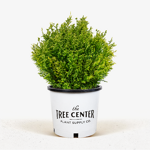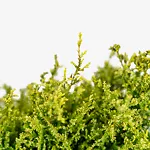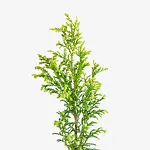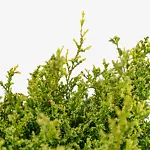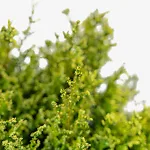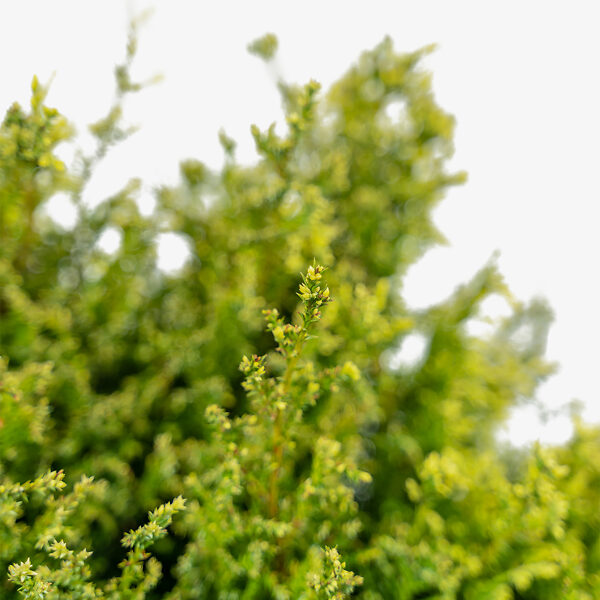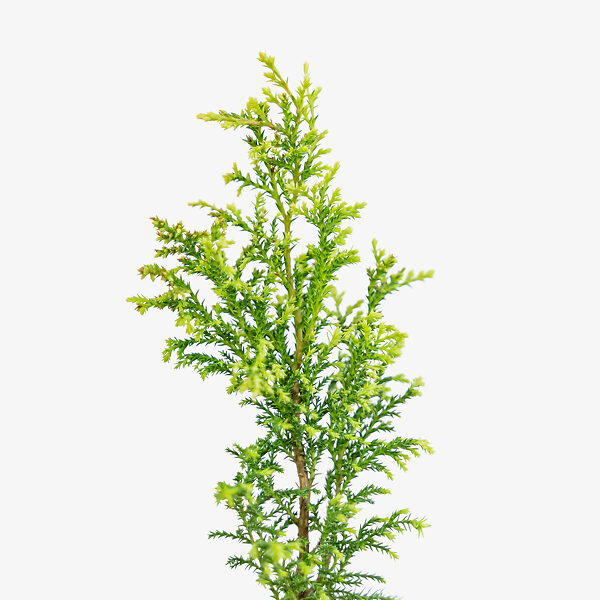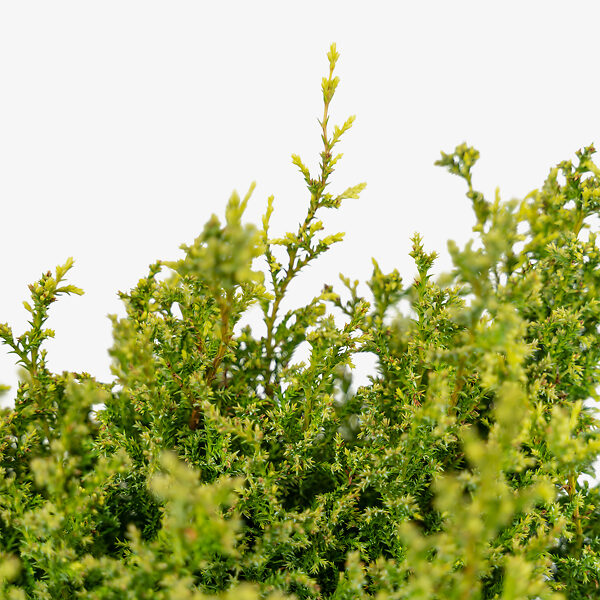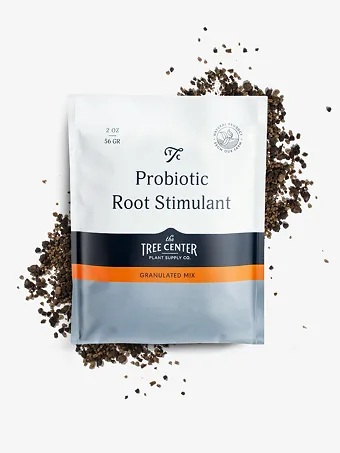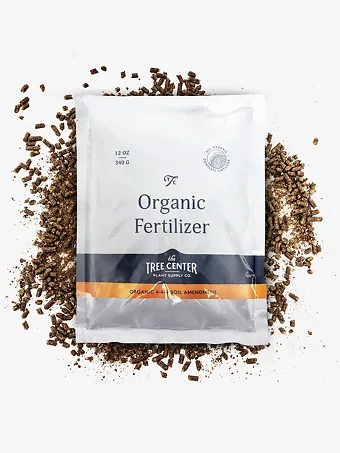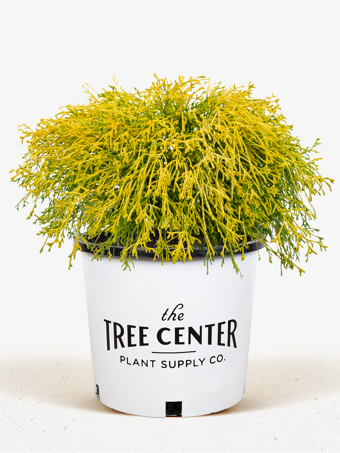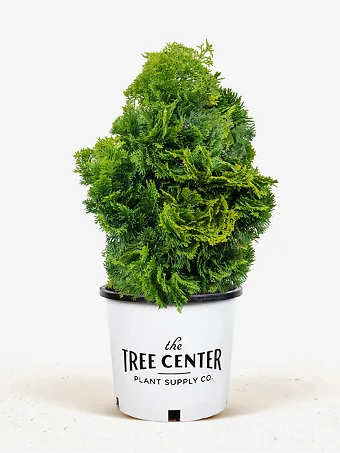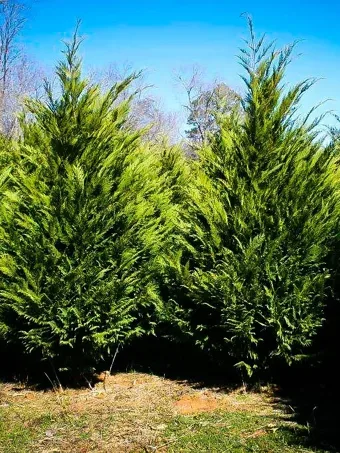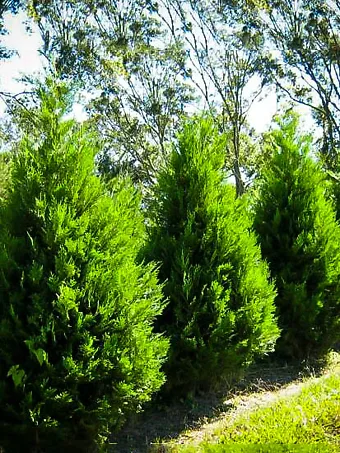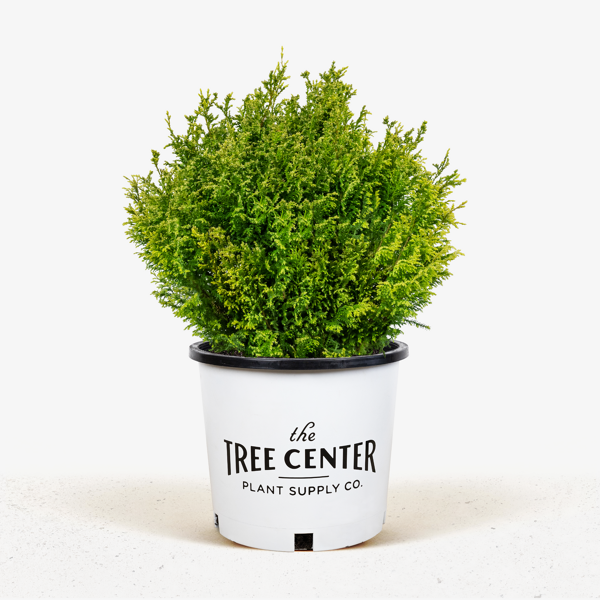
Cream Ball Sawara Cypress
Chamaecyparis pisifera 'Cream Ball'View more from Cypress Trees
Cream Ball Sawara Cypress
Chamaecyparis pisifera 'Cream Ball'
Select Size
30 day - ARRIVE AND THRIVE™ guaranteeLearn more


Special Features

Botanical Name
Chamaecyparis pisifera 'Cream Ball'
Outdoor Growing zone
4-8
Mature Height
1-6
Mature Width
1-6
Sun needs
Full Sun, Partial Sun
The Cream Ball Sawara Cypress is the brightest and lightest conifer variety you have ever seen. The creamy foliage is almost white at the tips, and inside the bush is a pale yellow-green. This is a unique color combination for conifers, and this rare plant is an outstanding specimen in any garden. It grows slowly, reaching 2 feet tall and wide, and it may eventually become as large as 6 feet in time. The soft, fuzzy foliage is charming and attractive, and this plant is perfect as a specimen in a bed, planted among rocks, or growing in planter boxes.
- Unique creamy yellow foliage with near-white tips
- Glows out like a beacon across the garden
- Rounded and compact – the ideal small specimen
- Perfect addition to rock gardens and small beds
- Easy to grow with just a single annual trimming
Grow the Cream Ball Sawara Cypress in full sun, or with some afternoon shade in hot zones. It is hardy in zone 4 and grows in most soils as long as they are not constantly wet. Richer, well-drained but moist soils are ideal. It normally has no pests or diseases and the only care needed is an annual trim to keep it tight and attractive.
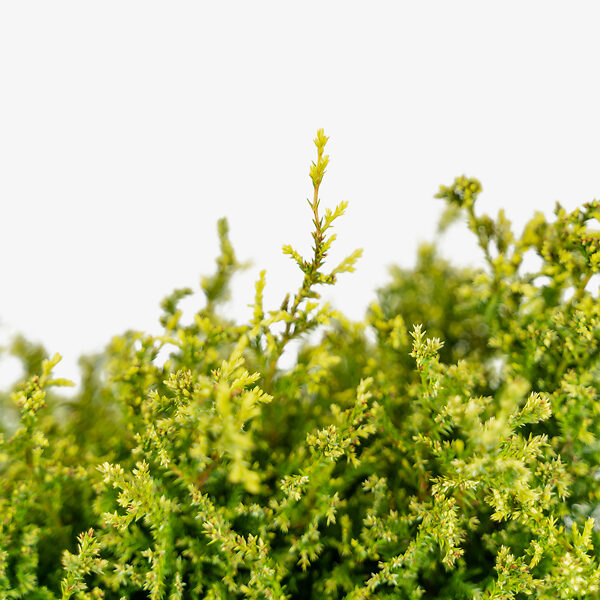
For charm and easy-care garden color, you can’t beat a collection of dwarf conifers. There is an extraordinary range of shapes, from balls to columns, and everything in between. The color range is extraordinary too, covering every shade of green, plus blues, golds and even winter reds. Unique, though, is the Cream Ball Sawara Cypress, and its impressive coloring makes it a wonderful addition to any garden. It is subtly colored in shades of the palest yellow and cream, with near-white tips and blue-gray overtones deep inside the plant. Growing steadily into a rounded globe that can ultimately be 6 feet tall and wide, it makes the perfect accent even when young. Planted against a backdrop of regular green foliage it really pops, and that is before you consider its great texture and soft look. Perhaps you will be inspired to look at our ever-growing collection of unique dwarf conifers, and create a dedicated bed or two in your garden. If you don’t know where to start, with so many to choose from, then the Cream Ball Sawara Cypress is a great place to begin your conifer odyssey – or to simply plant as a colorful friend among your shrubs, to enjoy the special charms of this unique plant as it grows beside you.
Growing the Cream Ball Sawara Cypress
Size and Appearance
The Cream Ball Sawara Cypress is a dwarf conifer evergreen that grows into a rounded globe. It grows 1 to 3 inches a year, so that in 10 years it will be a lovely specimen 2 feet tall and wide. In time it can grow to be 6 feet or more, keeping its rounded form. It has many slender stems, making a dense ball, and the stems are covered with small, short leaves that are triangular, partly laying on the stem and partly standing into the air, to give a soft, fuzzy look and feel to the plant. The newest leaves, at the tips of the branches, are the palest possible creamy yellow approaching white. As the leaves mature they turn pale lime-green, and older leaves can take on a pale blue-gray coloring. These layers of coloring create a really dynamic and dramatic looking plant, with colors that are truly unique in the garden.
Using the Cream Ball Sawara Cypress in Your Garden
When small this plant is ideal for planting in rock gardens and planter boxes. You can even use it in a window box of different dwarf evergreens – check out our current selection. Tuck it beside a rock in a bed, or among other dwarf evergreens or dwarf shrubs. Plant it thoughtfully in a bed, allowing for both its slow growth and ultimate size – you don’t want it to be swamped by faster-growing plants planted too close. You could also plant it in a planter box with other small shrubs or with flowering plants, or grow it in a pot to place on an outdoor table.
Hardiness
The Cream Ball Sawara Cypress is hardy in zone 4 and all way through zone 8. Winters are usually too warm in zone 9 for it to follow its natural growth cycle, which can lead to problems.
Sun Exposure and Soil Conditions
The best colors will develop in full sun, but in zones 7 and 8 some afternoon sun can be beneficial in avoiding summer sun scorch. This plant will grow in most ordinary garden soils, preferring richer but well-drained soils. Some summer watering may be needed in the early days, and avoid planting in very hot and dry spots. For growing in pots and planters, use a mix of 50% regular potting soil and 50% soil for succulents and cactus, to give good drainage and plenty of air around the roots.
Maintenance and Pruning
The Cream Ball Sawara Cypress is generally pest and disease free and easy to grow. Once it has been growing for a few years it is beneficial to trim lightly with sharp shears once a year after the spring growth has matured. This will keep it compact and a tight ball. Like many dwarf Sawara Cypress it does have a tendency with age to become more open and loose, revealing old brown foliage inside the plant. Annually trimming will keep it dense and beautiful for decades. No other care is needed.
History and Origin of the Cream Ball Sawara Cypress
This plant is a selected form of the Sawara cypress, Chamaecyparis pisifera. Found in forests in Japan, this tree grows well over 100 feet tall in time, and it can be found on mountain slopes all across the Japanese islands. As it is not a true cypress (which is Cupressus), it is also often called ‘false cypress’. Wild trees are almost never seen outside Japan, but for gardens there is an abundance of different forms of this useful evergreen, in many sizes, and with different kinds of foliage. The variety called ‘Cream Ball’ is a ‘plumosa’ type, which means it has feathery foliage, not the flat, scale-like needles seen in other plants of the species. It was discovered in the early 1980s by William Goddard, a conifer enthusiast who owned Floravista Gardens, in Victoria, British Columbia. We don’t know if it was a unique seedling, but more likely it began as a distinctive branch growing on another variety of Sawara cypress.
Buying the Cream Ball Sawara Cypress at the Tree Center
This really is a gorgeous and unique plant that you will love like a member of the family. Like one of your children it will grow, mature and make you proud. Order now because rare and very special plants like this are only ever available in small quantities, and the demand always outstrips the supply.
